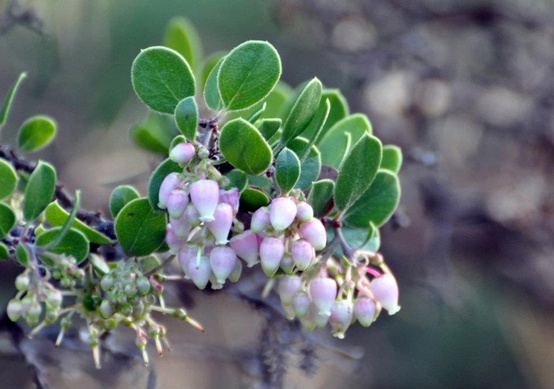The tall scraggly trees are "grey pines", which occur in the Sierra at elevations below 4000'. This picture is just down the road from us at about 3000' in elevation. It's located in an ecosystem known as California chaparral.
The storm that just passed left about 5 inches of rain in three days, so the ground is saturated. Some plants, like coyote brush, are starting to bloom now that the summer drought has broken.
chapparral
The chapparral comes to life
 Where I live the passing of the solstice and the arrival of winter rains brings the chaparral to life. Walking through the chapparral one can hear the sound of bees, busy at work on the manzanita flowers.
Where I live the passing of the solstice and the arrival of winter rains brings the chaparral to life. Walking through the chapparral one can hear the sound of bees, busy at work on the manzanita flowers.
Chaparral occurs in a very small area of the world. Only about 5% of the state of California has chaparral. Chaparral is a Spanish word derived from chaparro, meaning a "small" or "dwarf" oak. The area is known for it's lack of rain during the summer and early fall. Often 6 to eight months will pass without a drop of rain. When winter arrives it can rain 45 inches in just a few months. With the rains, plants that have been dormant during the long dry summer come to life.
Manzanita can be roughly translated from Spanish as to mean "little apple" for the berries that develop in summer from the small bell shaped flowers. The flowers appear early winter, like the one pictured above at the UC Botanical Gardens at Berkeley.
Today the sun is shinning and the ground freshly rained on. A perfect day for a walk.
Merry Christmas, from deep within the chaparral.

